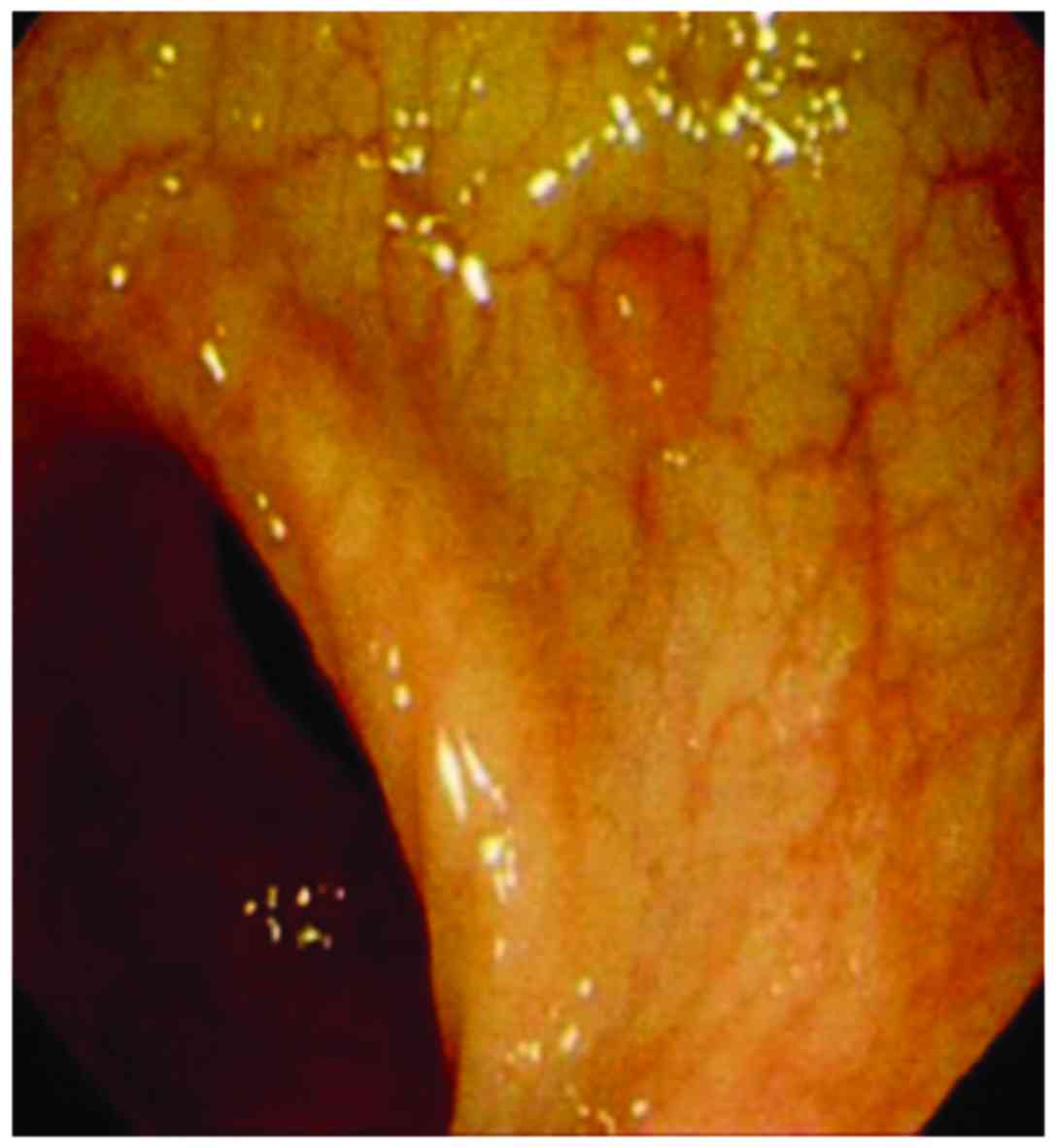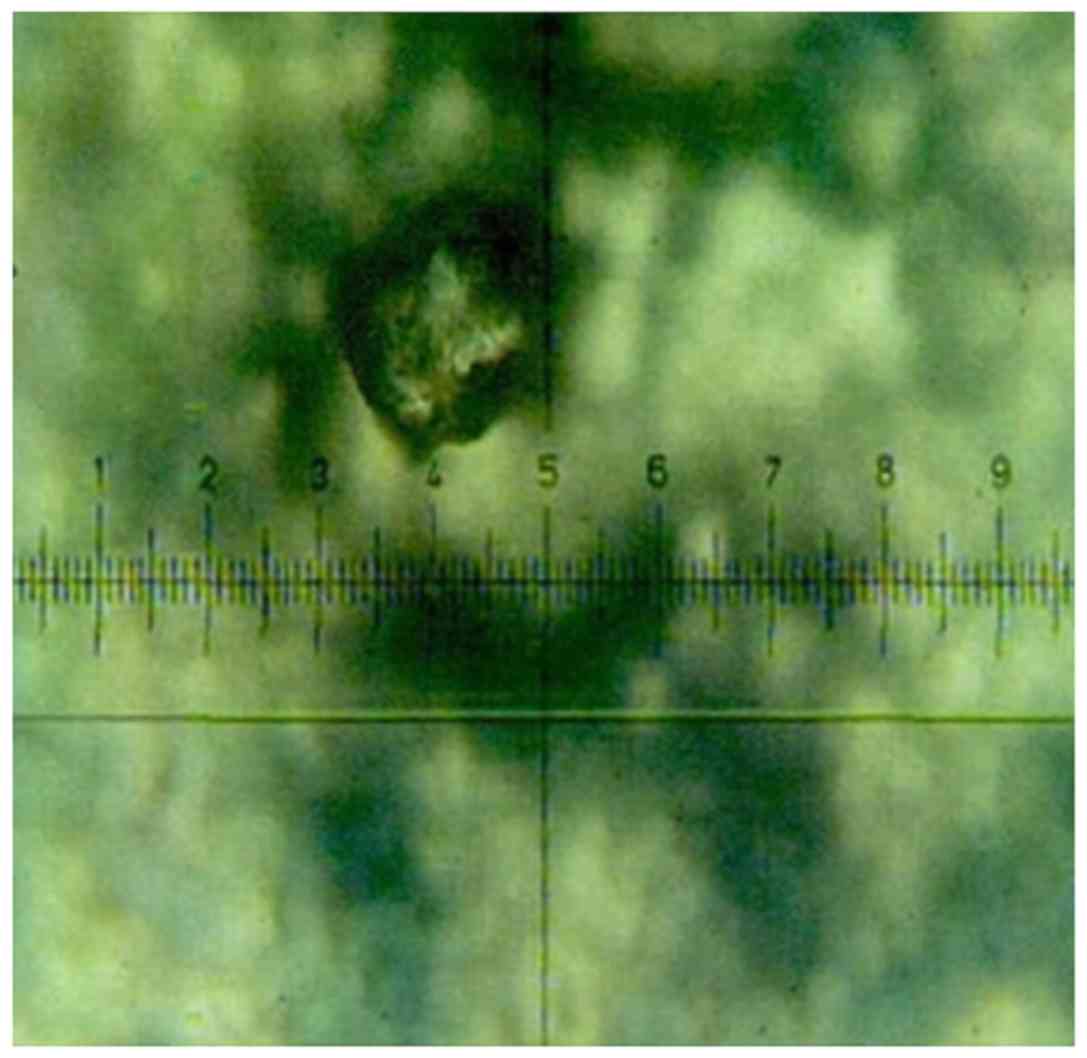|
1
|
Zhang H, Hou Y, Xu L, Zeng Z, Wen S, Du
YE, Sun K, Yin J, Lang L, Tang X and Liu M: Cytoplasmic drosha is
aberrant in precancerous lesions of gastric carcinoma and its loss
predicts worse outcome for gastric cancer patients. Dig Dis Sci.
61:1080–1090. 2016. View Article : Google Scholar : PubMed/NCBI
|
|
2
|
Abangah G, Rahmani A, Hafezi-Ahmadi MR,
Emami T, Asadollahi K, Jaafari-Haidarlo A and Moradkhani A:
Precancerous histopathologic lesions of upper gastrointestinal
tract among dyspeptic patients upon endoscopic evaluations. J
Gastrointest Cancer. 47:1–7. 2016. View Article : Google Scholar : PubMed/NCBI
|
|
3
|
Harmsen S, Meijerman I, Febus CL,
Maas-Bakker RF, Beijnen JH and Schellens JHM: PXR-mediated
induction of P-glycoprotein by anticancer drugs in a human colon
adenocarcinoma-derived cell line. Cancer Chemother Pharmacol.
66:765–771. 2010. View Article : Google Scholar : PubMed/NCBI
|
|
4
|
Bukowska D: Expression and distribution of
zona pellucida proteins 3 and 4 in morphologically abnormal canine
oocytes: A confocal microscopic observation-based study. Med Weter.
72:68–74. 2016.
|
|
5
|
Albino-Sanchez ME, Vazquez-Hernandez J,
Ocadiz-Delgado R, Serafin-Higuera N, León-Galicia I, Garcia-Villa
E, Hernandez-Pando R and Gariglio P: Decreased RARβ expression
induces abundant inflammation and cervical precancerous lesions.
Exp Cell Res. 346:40–52. 2016. View Article : Google Scholar : PubMed/NCBI
|
|
6
|
Go H, Hwang HJ and Nam TJ: A glycoprotein
from Laminaria japonica induces apoptosis in HT-29 colon cancer
cells. Toxicol In Vitro. 24:1546–1553. 2010. View Article : Google Scholar : PubMed/NCBI
|
|
7
|
Carta F, Sionis S, Cocco D, Gerosa C,
Ferreli C and Puxeddu R: Enhanced contact endoscopy for the
assessment of the neoangiogenetic changes in precancerous and
cancerous lesions of the oral cavity and oropharynx. Eur Arch
Otorhinolaryngol. 273:1895–1903. 2016. View Article : Google Scholar : PubMed/NCBI
|
|
8
|
Liu Z, Cai J, Yu Y, Fang H, Si Y, Jankee
JJ and Shen M: Tumor abnormal protein as a novel biomarker in
papillary thyroid carcinoma. Clin Lab. 63:479–485. 2017. View Article : Google Scholar : PubMed/NCBI
|
|
9
|
Lan F, Zhu M, Qi Q, Zhang Y and Liu Y:
Prognostic value of serum tumor abnormal protein in gastric cancer
patients. Mol Clin Oncol. 5:216–220. 2016. View Article : Google Scholar : PubMed/NCBI
|
|
10
|
Zhang L, Guo X, Min Y and Xu J: Tumor
abnormal protein (TAP) examination contributes to primary diagnosis
of bladder cancer. Int J Clin Exp Med. 8:18528–18532.
2015.PubMed/NCBI
|
|
11
|
Wu XY and Huang XE: Clinical application
of serum tumor abnormal protein (TAP) in colorectal cancer
patients. Asian Pac J Cancer Prev. 16:3425–3428. 2015. View Article : Google Scholar : PubMed/NCBI
|
|
12
|
Jin M, Roth R, Rock JB, Washington MK,
Lehman A and Frankel WL: The impact of tumor deposits on colonic
adenocarcinoma AJCC TNM staging and outcome. Am J Surg Pathol.
39:109–115. 2015. View Article : Google Scholar : PubMed/NCBI
|
|
13
|
Mroz A and Kiedrowski M: An unusual case
of colonic adenocarcinoma development in the region of
disseminating lobular breast carcinoma infiltration: Diagnostic
approach and review of the literature. Int J Clin Exp Pathol.
8:7470–7474. 2015.PubMed/NCBI
|
|
14
|
Jafferbhoy S, Paterson H and Fineron P:
Synchronous gist, colon and breast adenocarcinoma with double
colonic polyp metastases. Int J Surg Case Rep. 5:523–526. 2014.
View Article : Google Scholar : PubMed/NCBI
|
|
15
|
Grozdanov P, Hadjidekova S, Dimova I,
Nikolova I, Toncheva D, Ganchev G, Zlatkov V and Galabov AS:
Characterization of genomic changes in the cervical pre-cancerous
lesions and tumors induced by different types of human
papillomaviruses. Virusdisease. 27:271–276. 2016. View Article : Google Scholar : PubMed/NCBI
|
|
16
|
Musiienko AM, Alzahrani S, Simpson JA,
Heriot A and Warrier S: Colonic adenocarcinoma encasing the femoral
nerve: Complete surgical excision with preservation of function.
ANZ J Surg. 60:539–543. 2016.
|
|
17
|
Tatarian T, Arkonac D, Phillips B,
Isenberg GA and Goldstein SD: Colonic adenocarcinoma presenting as
sigmoidorectal intussusception: A consideration for intussusception
reduction. Am Surg. 82:181–182. 2016.PubMed/NCBI
|
|
18
|
Chen J, Ding Z, Peng Y, Pan F, Li J, Zou
L, Zhang Y and Liang H: HIF-1α inhibition reverses multidrug
resistance in colon cancer cells via downregulation of
MDR1/P-glycoprotein. PLoS One. 9:e988822014. View Article : Google Scholar : PubMed/NCBI
|
|
19
|
Jass JR: Colorectal cancer: A multipathway
disease. Crit Rev Oncog. 12:273–287. 2006. View Article : Google Scholar : PubMed/NCBI
|
|
20
|
Herrera-Covarrubias D,
Tecamachaltzi-Silvaran MB, Barradas-Moctezuma M, Rosales-Raya JB,
Manzo J, García LI, Aranda-Abreu GE, Ismail N, Coria-Avila GA and
Hernández ME: Effect of copulation on potentially precancerous
prostate lesions, serum testosterone and prolactin levels in rats.
Exp Oncol. 38:73–79. 2016.PubMed/NCBI
|
|
21
|
Kamalapuram SK, Kanwar RK and Kanwar JR:
Nanotheranostic based iron oxide (Fe3O4) saturated lactoferrin
nanocapsules for colonic adenocarcinoma. J Biomed Nanotechnol.
12:1758–1773. 2016. View Article : Google Scholar
|
|
22
|
Sun L, Xu S, Liang L, Zhao L and Zhang L:
Analysis of ROC: The value of HPV16 E6 protein in the diagnosis of
early stage cervical carcinoma and precancerous lesions. Oncol
Lett. 12:1769–1772. 2016.PubMed/NCBI
|
|
23
|
Halkias C, Sloane J, Ben-Gashir M and
Bashir G: Synchronous metastatic omental melanoma and colonic
adenocarcinoma: A case report. BMC Res Notes. 8:1252015. View Article : Google Scholar : PubMed/NCBI
|
|
24
|
Jia AI, Lv Y, Guo X, Ren LI and Qin J:
Ectopic expression of p33(ING1b) suppresses proliferation and
induces apoptosis in colonic adenocarcinoma cells. Oncol Lett.
10:1517–1522. 2015.PubMed/NCBI
|
|
25
|
Almadi MA, Alharbi O, Azzam N, Wadera J,
Sadaf N and Aljebreen AM: Prevalence and characteristics of colonic
polyps and adenomas in 2654 colonoscopies in Saudi Arabia. Saudi J
Gastroenterol. 20:154–161. 2014. View Article : Google Scholar : PubMed/NCBI
|
|
26
|
Mersakova S, Nachajova M, Szepe P,
Kasajova PS and Halasova E: DNA methylation and detection of
cervical cancer and precancerous lesions using molecular methods.
Tumour Biol. 37:23–27. 2016. View Article : Google Scholar : PubMed/NCBI
|











